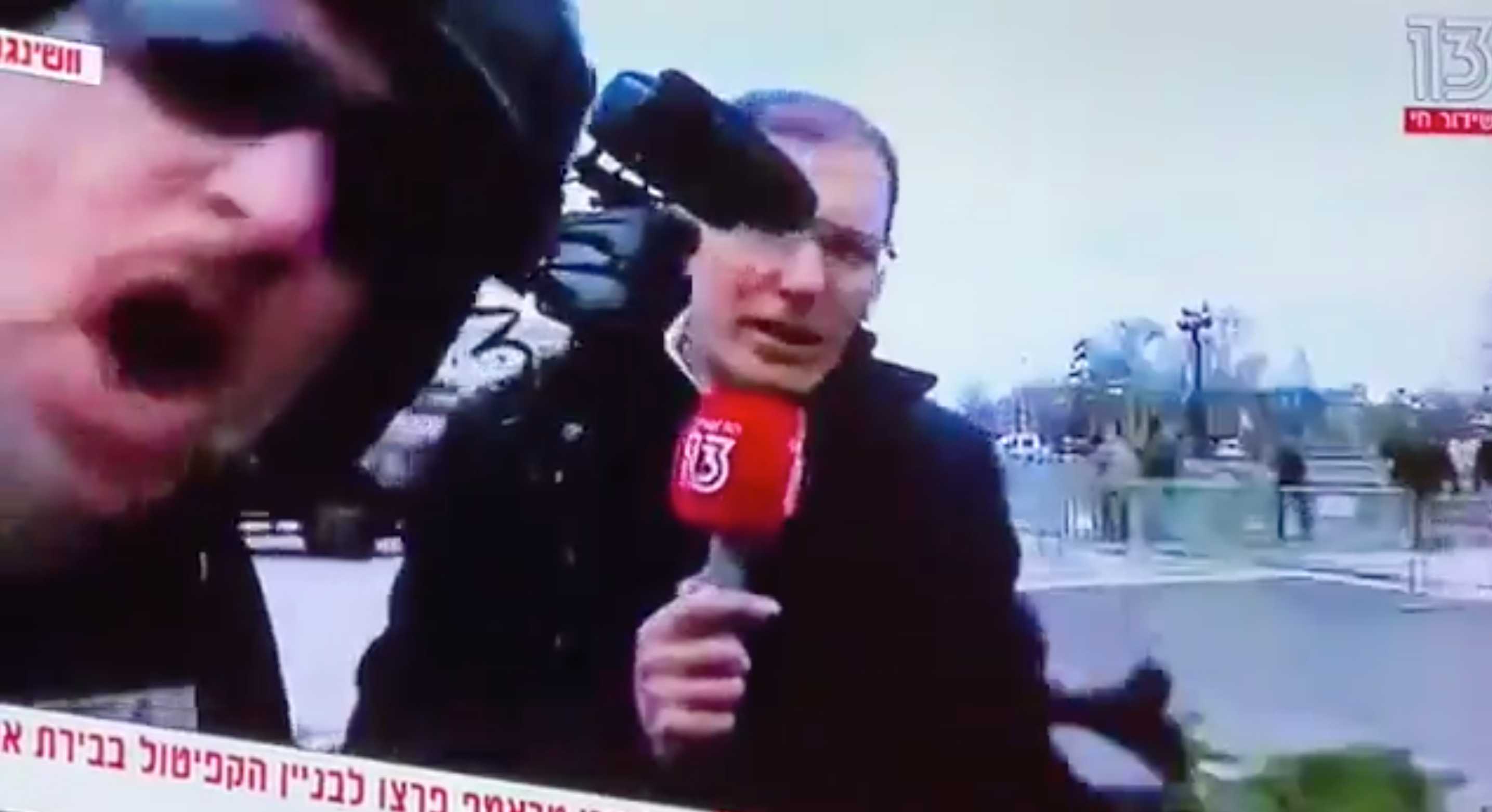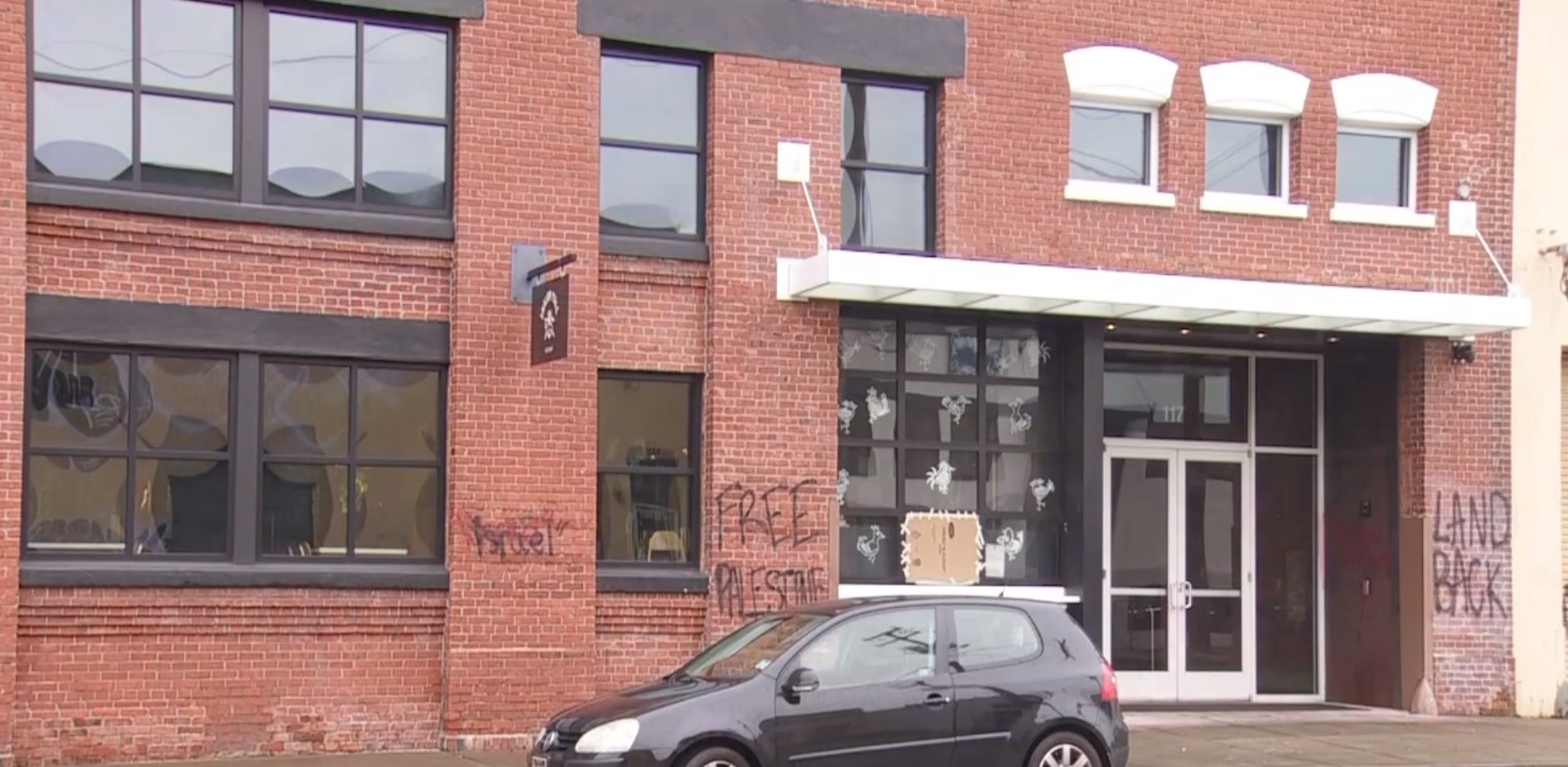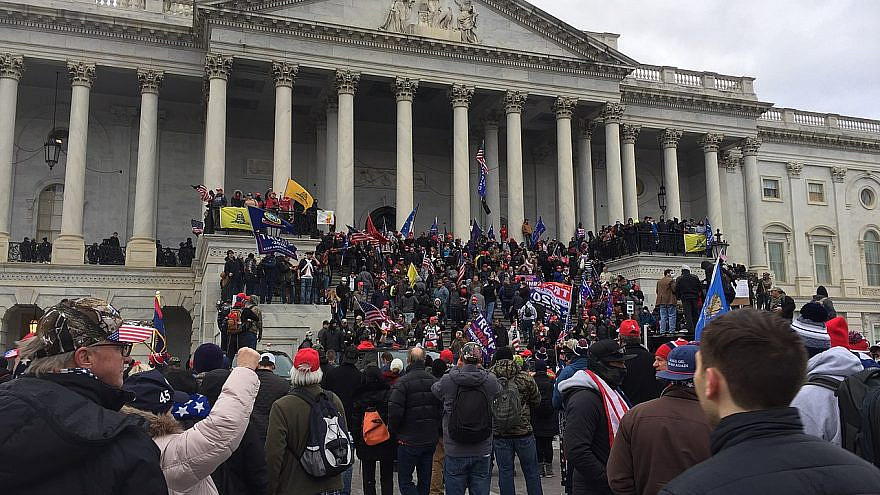As the repercussions of the deadly Jan. 6 mob invasion of the U.S. Capitol continue to reverberate across the country and beyond, like most Americans, many in the Jewish community looked on with shock and disbelief as the events unfolded.
Yet for Jews, the attack is part of an emergent threat of extremism that has led to a massive uptick in anti-Semitic and anti-Israel incidents in recent years—an FBI report released in November that said Jews were the most targeted demographic for hate crimes among religious groups in 2019—with much of it being discussed and planned on social media and over the Internet.
In fact, an FBI report issued ahead of the Capitol siege, but revealed publicly afterwards, noted that extremists used online forums and platforms to discuss and coordinate violence on the day.
“Violent extremists and hate groups make contact through a variety of means, working to lure recruits, train and mobilize individuals,” said Michael Masters, CEO and national director of the Secure Community Network, the security arms of the Jewish Federation of North America and the Conference of Presidents of Major American Jewish Organizations. “The most prevalent tactics take place via the Internet and can include social-media sites, online forums and chatrooms, and even Internet games.”

Social media has become a flashpoint in recent years with hate groups finding ways to spread their ideology and recruit new people, both men and women. It has also become a source of propaganda and hate when it comes to modern-day blood libels and claims that Jews or Israel are somehow responsible for the global coronavirus pandemic.
While evidence of these allegations can be found on mainstream social-media sites, it’s on the “dark web” and on sites like Telegram and 4 Chan where these ideologies promulgate.
According to the Anti-Defamation League, extremists caught on video in Washington on the day of the Capitol melee included members of the Proud Boys, which has been called nationalistic and violent; QAnon, a “global, wide-reaching and remarkably elaborate conspiracy theory”; the right-wing, anti-government extremist group Oath Keepers; and the white-supremacist groups New Jersey European Heritage Association and Groyper Army.
Though the mob attack itself did not target Jewish individuals or institutions, Jewish observers were struck by familiar images of anti-Semitism and hate that have been used by extremists.
In the hours after last week’s attack, Sen. Jacky Rosen (D-Nev.), who is Jewish and co-chair of the Senate Bipartisan Task Force for Combating Anti-Semitism, took to Twitter, saying “I’m horrified by the anti-Semitic rhetoric and symbols we witnessed yesterday—from a member of Congress saying ‘Hitler was right on one thing’ to a rioter inside the Capitol wearing a ‘Camp Auschwitz’ shirt. These disgraceful expressions of anti-Semitism and white supremacy should alarm us all.”

Indeed, widely circulated images such as a photo of a gray-bearded man in a black sweatshirt with a skull and crossbones graphic, and the words “Camp Auschwitz,” referring to the Naxi death camp; a man walking through the halls of the Capitol with a Confederate flag; and an Israeli reporter being harassed on camera by a man yelling at him saying, “Tell me, what’s a goy,” are all reminders that anti-Semitism is alive and well within these extremist groups.
Perhaps lesser understood but equally as troubling were those carrying flags that have become symbols of extremist groups—like the green-and-black flag that the Southern Poverty Law Center calls the “national flag of Kekistan [that] mimics a German Nazi war flag with the Kek logo replacing the swastika and the green replacing the infamous German red. A 4chan logo is emblazoned in the upper left-hand corner” or the yellow-and-black “Gadsden” flag with a snake and the words “Don’t Tread on Me” that has been co-opted by members of the alt-right.
Disinformation in the political sphere
For those who track hate groups, signs of the potential for violence have been rising recently.
Michael German, a fellow with the Brennan Center for Justice’s Liberty & National Security Program and a former special agent with the FBI, wasn’t surprised by last week’s attack and stated that perhaps others shouldn’t have been either.
“In the preceding weeks, far-right militants engaged in violence at a D.C. Trump rally and attacked the Oregon State Legislature. Law enforcement should not have been surprised,” he said. “The event was called ‘Stop the Steal,’ and the reason they picked that day is because that’s when the electoral votes were being counted. How could they be surprised when the mob stormed the Capitol for the purpose of stopping the count?”
In its “2020-2021 Supplemental Threat Assessment: The Convergence of COVID-19, Nationwide Civil Unrest and the Upcoming Presidential Election,” issued in October 2020, the N.J. Department of Homeland Security labeled domestic extremists as a “high threat in 2021.”
“Domestic extremists—primarily anarchist, anti-government, and racially motivated—will continue to manipulate national incidents … to further their agendas and remain a threat. The extremists will use the confluence of those factors to promote propaganda, recruit new members, encourage supporters to commit attacks, spread disinformation, and create unrest in the United States,” said the unclassified report. “Disinformation has the potential to expend resources, incite fear, create distrust between the government and people, increase polarization in groups, influence governmental actions or law enforcement responses or cause undue harm.”
While disinformation seems to be playing a part in the political sphere, especially with those lawmakers who have disputed the 2020 election results since Nov. 3 (with many hinting at it even before the election), it may be the influence on law enforcement and public safety officials—several have been suspended after taking part in the rally—that is of particular concern especially in light of the FBI warning about potential attacks in the coming days.
“My concern is that law enforcement has allowed these far-right militants to engage in public violence for so long … so they have been conditioned to believe they can act with impunity,” explained German. “This is why they reacted with such anger and violence toward the Capitol police officers that tried to resist their attack.”
What to watch post-pandemic
While much has been made of hate on the right, particularly in light of recent events, security experts say people can’t forget that there are those on the left who also pose a danger because of their extremist views, especially when it comes to how they treat Jews and the pro-Israel community.
“They rear their heads in different ways and use different language, but it is all the same,” said Evan Bernstein, CEO and national director of CSS‒Community Security Service. “We have to be keenly aware of anti-Semitism on both sides, and it will become deeper and stronger as the moderate middle disappears and as you add in an economic downturn that Jews are often blamed for—it turns into a perfect storm.”
Liora Rez, executive director of Stopantisemitism, reminds JNS that those on the far-left have used Israel as an excuse to intimidate and attack Jews.
“As our synagogues get vandalized with ‘Free Palestine’ graffiti, as Jewish students get bullied at school over their support for Israel, as our congressional leaders continue to single out the Jewish people and nation, it is even more important to spotlight the injustices and hatred that Jews are facing in the 21st century in order to stop it.”

Though no credible or specific threats have been issued against the Jewish community, security experts say that Jews must remain vigilant.
“Unfortunately, many of the conspiracy theories promoted by white supremacists and far-right militants center Jewish people as the enemy,” said German, “so there is a substantial risk that Jewish institutions will be attacked again in the future just as they have in the past, including the recent past.”
Historically, added Richard Priem, the deputy national director at CSS, times of polarization don’t “bode well for Jews, and we see an uptick in anti-Semitic incidents. Things have been happening in the last few years weren’t commonplace for us,” like the deadly attacks against Jewish worshippers in Pittsburgh; Poway, Calif.; and Monsey, N.Y.; and Jewish businesses such as in Jersey City, N.J.
“We need to not be complacent, but make our communities aware of what they can do for their own security,” he said, noting that his organization will be rolling out training programs on situational awareness so people become accustomed to taking a look around their surrounding and reporting what is out of place.
Masters of SCN stated, “We cannot control the time and place of the next incident, but we can control our preparation. … Our community has faced threats for well over 3,000 years; we are confident that by working together we can overcome the threats we currently face.”
The number of hate crimes targeting Jews certainly warrants the need to be vigilant. According to the Federal Bureau of Investigations’ Hate Crimes report for 2019, the last year that is available, of the 1,650 incidents of religiously motivated hate offenses, 995 of them were “anti-Jewish.”
While statistics are still to be culled for 2020, according to one informal metric, it can be said that “just 75 years after the Holocaust ended, we are seeing near daily anti-Semitic incidents across America,” according to Raz.

And this comes despite the closure of Jewish communal buildings and synagogues for many months due to the pandemic.
“It would be a mistake to think that fewer deadly attacks in 2020 equate to improvement,” said Masters. “We have assessed, with federal law enforcement, that the threat to our institutions is likely to be higher once they reopen.”
In addition to securing facilities, Bernstein believes it’s important for people to call out anti-Semitic attacks when they occur. Naming it the “pyramid of hate,” Bernstein said that “as a society, you start accepting certain things. We’ve seen it in other countries where Jews have been persecuted; there’s a normalization that takes place.”
For instance, he said, “in 2019, so many swastika incidents happened that people stopped commenting on it, [whereas] five or six years ago it would have [warranted] a press conference.”
Likewise, during the rash of assaults on Chassidic Jews in Brooklyn, N.Y., in late 2019, he said, “you stopped seeing press conferences for that. So what comes next? Murder? Is that the level that we come to accept because we had four murderous attacks in just under two years?”



























You are wrong to condemn everyone on that march of protest as a Jew hater. I am surprised that you have fallen. into the trap of generalizing rather than analyzing. There were distinctly different people there. To comndemn them is to condemn some of us,.as well. carol fineblum. wife of MIA/POW who fought to be recognized as different as the Chumash tells us to be